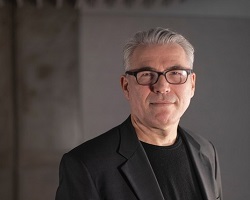In focus: co-design: matching the needs of the community with the priorities of health stakeholders

R. Osborne
At a workshop organized by WHO on 6–7 November 2019 in Moscow, Russian Federation, Richard Osborne, a leading expert on health literacy and co-design and Professor of Health Sciences at Swinburne University in Australia, shared his experience and views on the critical importance of using co-design – bringing together health authorities and members of the community – for the development of health literacy projects intended to prevent and control noncommunicable diseases (NCDs) in the WHO European Region.
The importance of health literacy is increasingly recognized in relation to the prevention and treatment of NCDs throughout the life course. In support of this, WHO has initiated National Health Literacy Demonstration Projects (NHLDPs) in various WHO regions, including the European Region, to accelerate NCD intervention development.
The current NHLDPs conducted in the Region use the Optimising Health Literacy and Access (Ophelia) approach. The Ophelia approach relies strongly on co-design, and involves the collaboration of a wide range of community members, local leaders and health workers to develop interventions based on the health literacy strengths and weaknesses within a community.
“Once all the issues and problems are on the table and all parties have shared their personal and local wisdom about how to improve the health situations for individuals and communities, co-design involves matching the specific needs of communities with service improvements and a range of interventions,” said Professor Osborne.
In this way, Ophelia and co-design are all about engaging with local communities and allowing for that local wisdom to be systematically identified. Importantly, Ophelia manages to ensure all voices are heard and are at the same volume.
How it works
The Ophelia process, of which co-design is an element, includes three phases.
Phase 1 involves a local needs assessment, using multidimensional tools such as the Health Literacy Questionnaire and local data. The data reveal health literacy strengths and challenges and are used to create evidence-based but tangible short stories (vignettes) about the real life situations of a diverse range of people affected by health problems. These vignettes are deeply engaging and are discussed in workshops with stakeholders, including members of the community and a wide range of health workers and health service managers.
The vignettes are a powerful tool in the Ophelia co-design process as they allow genuine participation where all jargon is removed. Rich discussion reveals local wisdom, where all the ideas of stakeholders are tabled. As a result, hundreds of ideas are generated to address the identified challenges and needs, and to build on the existing strengths that community members and service providers (including doctors) may have. In other words, Ophelia efficiently extracts existing innovation from those with the lived experience of dealing with the complexity of their own health, as well as innovations from frontline practitioners. This helps to ensure no one in the community is left behind.
Phase 2 entails the co-design of interventions into implementable packages. That process is done in collaboration with local stakeholders, using the results from the first phase. The international evidence is also consulted. Phase 3 then focuses on the testing, implementation, quality improvement, evaluation and embedding of selected interventions.
On the ground implementation
“At the end of the day, Ophelia and co-design means taking a step back in order to understand the full range of factors and contexts about why a person hasn’t managed to quit smoking or why they struggle to achieve a healthy diet – even though they may know it’s critically important for them,” said Osborne.
In Melbourne, local authorities and health practitioners teamed up with Arabic-speaking and Italian women in disadvantaged communities to understand why the turnout for breast cancer screening was so low among these women.
“We did the Ophelia co-design work and the women came up with around 240 different ideas – and in the end, 7 of those ideas were selected and tested. One of the ideas was to give a telephone call to these women and speak to them in their own language. That’s what the women said they needed, and that’s what worked incredibly well,” said Osborne.
The breast cancer testing rate among under-screened women jumped from 5% to 55%, according to Osborne, simply by calling women directly on their home telephones and speaking with them in their mother tongue – as oppose to sending them a written letter in English or their preferred language.
“That was just the kind of local community wisdom that we were looking for. The best part of co-design involves finding local wisdom, not only among health practitioners and other authorities, but also among those people living with the health problems 24/7, in order to find a whole range of solutions to match the complexity of people living in the real world,” Osborne said.



